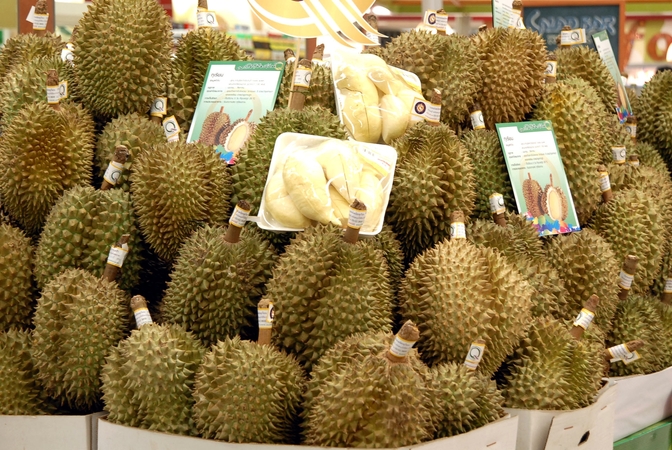Thailand’s durian market: Boom or bust?

According to a study conducted by the Bank of Thailand’s Southern Region Office, the supply of durian has been rising since 2016 in line with rising prices.
Most of the durian is grown in Chanthaburi and Chumphon provinces, with the three southern border provinces – Pattani, Narathiwat and Yala – making up the difference. Of the durian exported, 95.8 per cent is fresh and the remainder frozen. Up to 77 per cent of durian grown in the country is sold to China.

China’s role in the Thai durian market
Research indicates that demand for durian from China has risen sharply. Currently, there are more than 600 Chinese companies that import durian or lhong from Thailand, because the local monthong variety is sweet, creamy and comes at an affordable price.

How Chinese entrepreneurs approach the market
Chinese businesses have been investing in the Thai durian sector for more than 20 years now but have only very recently accelerated their purchases. Now, the food-processing industry has become a key player, allowing Chinese entrepreneurs to become part of the supply chain, which in turn has boosted the demand in Thailand.
This upstream-downstream supply has also spawned jobs and investment, but the negative consequence of this is that Chinese vendors can completely control the price. This disadvantage may create a problem for farmers and the future of the fruit in Thailand.
.jpg?x-image-process=style/lg-webp)
However, a study has found that Thai durian will maintain its market provided its standard is maintained. The supporting factors are:
1. With continuous demand, the market in China can be expanded;
2. Competitors do not have the permanent right to export durian to China like Thailand does;
3. The quality of Vietnamese monthong durian does not match that of monthong durian from Thailand, while Malaysia’s musang king durian is three or four times more expensive;
4. Processing factories currently control supplies and maintain the price.
Risk factors:
1. Global supply will rise in the next four or five years and competitors will become stronger;
2. Thailand’s only major exporter of durian is China and there is no sign of a new market;
3. The quality of Thai durian is inconsistent despite increased production;
4. Vietnam is improving its monthong variety with full support from the government.
How will the Thai durian market adapt?
Though the future of the durian business is still bright, Thailand has to be cautious. The goal is to expand the market, improve quality, reduce costs and coordinate with related parties to achieve sustainability.
The government also needs to find other markets like India, so Thailand doesn’t have to just rely on one market. It also has to enhance research and development along with agricultural knowledge to improve yields and also promote the use of durian skin in other applications to reduce waste. The government must also encourage farmers to select suitable durian growing areas and provide subsidies.
Farmers, meanwhile, have to improve the quality of farming based on good agricultural practices and minimise the use of chemicals. They also need to explore new methods to improve the yield, especially in the southern provinces, and coordinate with sellers go gain more bargaining power with Chinese vendors.
